 Image search results - "ward" Image search results - "ward" |

Haneda to Tokushima
|
|
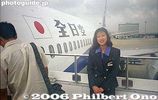
Hi Philbert! Welcome aboard!
|
|
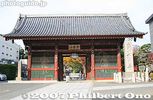
Belonging to the Buzan School of the Shingon Sect of Buddhism, Gokokuji Temple was built by the mother of Shogun Tokugawa Tsunayoshi in 1682. The Gekkoden Hall was moved here from Miidera temple in Otsu, Shiga Pref. The Tahoto Pagoda was modeled after the Tahoto at Ishiyamadera in Otsu, Shiga. Okuma Shigenobu, founder of Waseda Univ., is also buried here. This is the entrance to Gokokuji Temple, Niomon Gate. It's right next to Gokokuji Station on the Yurakucho subway line. 仁王門
|
|

Entrance to Kyu-Shiba Rikyu Gardens, a real oasis in an urban jungle. Another waterfront garden with classic Japanese-style elements with a pond, pine trees, rocks, and stone lanterns.
|
|

The 25th Asakusa Yabusame horseback archery was held on April 21, 2007 at Sumida Park.
|
|

Sando worship path to Taishakuten temple. Shibamata is in Tokyo's Katsushika Ward bordered by the Arakawa River in the west and by the Edogawa River in the east.
|
|

"Watakushi, umare mo sodachi mo Katsushika, Shibamata desu..." (I was born and raised in Shibamata, Katsushika Ward) If this opening line sounds familiar, you must be one of the many ardent fans of Tora-san movies.
|
|

Belonging to the Shingon Sect's Buzan school, this is one of Tokyo's major temples. The real name is Sojiji (總持寺), but everyone calls it Nishi-Arai Daishi.The temple grounds feature many flowering trees and plants including an unusual species of cherry blossoms which bloom in winter. Daishi-mae Station. Much larger station than I expected. Probably for the New Year's crowds. 大師前駅
|
|

JR Ryogoku Station platform for the Sobu Line.
|
|

After you pass through the Niomon Gate, this is what you see.
|
|

Kyu-Shiba-rikyu was first built in the 17th century and used as the residence of a number of nobles. Purchased from the Arisugawa family in 1875 by the Imperial Household Agency which made it the Shiba Detached Palace.
|
|

Parallel to Sumida River, the archery course is straight and narrow, stretching from the Tobu Line bridge to Kototoi Bridge.
|
|

The Tora-san "Otoko wa Tsurai Yo" (It's Tough Being a Man) movie series was played by the late Atsumi Kiyoshi. Tora-san is Japan's most lovable drifter and lovelorn on the silver screen. Forty-eight movies in this series were produced from 1969 to 1995. Katsushika-ku is where the Tora-san Museum is.
|
|
|

Daishi-mae Station 大師前駅. Nishi-Arai Daishi Temple was said have been founded by Priest Kobo Daishi in 826. One of the Kanto Region's Big Three Daishi Temples.
|
|
|

Well
|
|

Bird's eye view of Kyu-Shiba Rikyu Gardens as seen from Hamamatsu World Trade Center
|
|

The course has three targets which the archers will shoot arrows at.
|
|

Statue of Tora-san in front of Shibamata Station. Posed like he's going to the station for another faraway trip...
|
|

Sando worship path to Taishakuten temple
|
|

The main path to the temple is lined with the usual shops, but it is not aligned with the train station. The path from the train station takes a different route.
|
|

JR Ryogoku Station 両国駅
|
|

Well
|
|

The buildings were destroyed in the Kanto Earthquake in 1923 and the property was donated to Tokyo in 1924 to commemorate the start of Emperor Showa's reign.
|
|

Raised dirt along the archery course.
|
|

JR Ryogoku Station. This part of the station building is now a beer hall. The train station entrance has moved to the right of this.
|
|

This is a pose when Tora-san goes to the Shibamata Station and he looks back to his sister Sakura who calls him.
|
|

The path is lined with shops.
|
|

Main path to temple
|
|
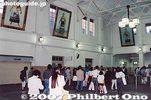
Old entrance to Ryogoku Station with a high ceiling and giant portraits of sumo wrestlers.
|
|

Map of temple grounds. Belonging to the Buzan School of the Shingon Sect of Buddhism, Gokokuji temple was built by the mother of Shogun Tokugawa Tsunayoshi in 1682.
|
|
|
|

First, the horses, archers, and attendants parade along the entire course.
|
|

The first Tora-san movie came out in 1969 and over 40 more installments have been produced since then. It is entered in the Guiness Book of World Records as being the movie series with the most sequels.
|
|

Tora-ya
|
|

Sanmon Gate, the main gate. 山門
|
|

He will soon be accompanied by a statue of his sister Sakura.
|
|

Steps going up to an inner gate called Furomon 不老門
|
|

Pine trees and pond
|
|

Wooden targets
|
|

Shibamata Station is on Keisei Kanamachi Line which runs between Kanamachi Station on the Japan Railways Joban Line (originating at Ueno Station) and Keisei Takasago Station on the Keisei Main Line coming from Keisei Ueno Station.
|
|

This is the shopping arcade which serves as the setting for the famous Tora-san movie series starring Atsumi Kiyoshi.
|
|

Sanmon Gate
|
|

Present entrance to Ryogoku Station (during spring festival).
|
|
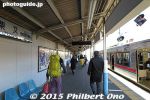
Shibamata Station platform
|
|

Furomon Gate (Ageless Gate) 不老門
|
|
|

Archer
|
|

Shibamata Station platform
|
|

When you get to Shibamata, don't expect the quiet shitamachi charm depicted in the Tora-san movies. Expect a lot of tourists instead, especially on weekends and holidays.
|
|

Food stalls lead you to the main worship hall.
|
|

Ryogoku Station exit. Only one sumo portait hangs here.
|
|

View from Furomon Gate
|
|
|

Yabusame archer
|
|

Map of Ryogoku. The Kokugikan sumo arena is north of the station, as well as the Edo-Tokyo Museum.
|
|

Shibamata Station
|
|

Fame has brought prosperity to the shops which line the mall leading to the Shibamata Taishakuten Temple. This shop, called Kameya Honpo, apparently served as the model for the Tora-ya dumpling shop.
|
|

Dai-Hondo Hall, Nishi-Arai Daishi, Tokyo 大本堂According to legend, when prayers were offered to save villagers from an epidemic, pure water gushed out of a hitherto dried-up well and got rid of the plague. Since the well was on the west side of the temple hall, this area came to be called "Nishi-Arai" (New Well in the West). The temple is famous for warding off fire and misfortune.
|
|
|
|
|
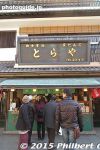
Shop called Toraya.
|
|
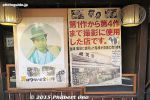
This shop was used in the early Tora-san films.
|
|
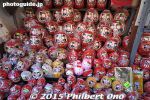
Daruma dolls
|
|
|
|
|

There are plans to build a statue of Sakura, Tora-san's sister, near this statue at Shibamata Station
|
|

The shop sells kusa dango (mugwort dumplings with real grass inside), the local specialty. Photo: Nitenmon Gate in view
|
|

Incense burner
|
|
|
|
|
|

Toward the end of the shop-lined mall, you will see this Nitenmon Gate of the Shibamata Taishakuten Temple, formally known as Daikyoji. 二天門
|
|

The plot is basically the same for each installment: middle-aged Kuruma Torajiro^ (Tora-san) meets pretty woman (the movie's leading lady whom the Japanese call the "madonna"), has a good time with her and falls in love. Photo: Tora-san Mus
|
|

Lantern
|
|

Main entrance to Aoyama Cemetery during cherry blossom season in early April. Gaienmae Station (Ginza/Hanzomon Line) and Nogizaka Station (Chiyoda Line) are the closest subway stations.
|
|
|
|
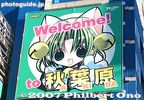
Welcome to Akihabara! (Or Akiba for short.) Japan and Tokyo's largest cluster of electronics shops.
|
|
|

Ontakesan Station on the Tokyu Ikegami Line which starts at Gotanda Station. 東急池上線御嶽山駅
|
|

Shakujii-Koen Station on the Seibu Ikebukuro Line. 石神井公園駅
|
|

The cherry blossoms lining Sotobori Moat also look stunning from the road, Sotobori-dori in front of Kagurazaka.
|
|

Entrance to Kiyosumi Teien Gardens. Admission 150 yen.
|
|

Cherry blossoms along the Shakujii River, near Shin-Itabashi Station on the Mita subway line.
|
|

JR Sugamo Station on the Yamanote Line. 巣鴨駅
|
|

JR Gotanda Station, east entrance 五反田駅
|
|

Wood carvings on Nitenmon Gate
|
|

He somehow always loses her much to the dismay of his married sister Sakura (played by Baisho Chieko) and adoptive uncle and aunt who run a small kusa dango (mugwort dumpling) shop in Shibamata.Photo: Tora-san Museum 寅さん記念館
|
|

Dai-Hondo Hall 大本堂
|
|

Map of Asukayama Park. Near Oji Station on the Keihin-Tohoku Line, a slender park noted for cherry blossoms.
|
|

Buddha statue with Tahoto Pagoda in background
|
|

Koi carp fish
|
|

Deer skin
|
|

Path to Ontake Jinja.
|
|

Road to Shakujii Park.
|
|

People in a long line waiting to enter Canal Cafe to either dine or rent a rowboat.
|
|

This garden is very green. Even the pond is deep green. Kiyosumi Garden is classified as a "kaiyu-shiki teien" (回遊式庭園) or "circular-strolling Japanese garden." It's a common and classic Japanese garden design where you simply walk around the garden, usually around a central pond.
|
|

There are cherries on both sides of the river and a walking path on both sides.
|
|

In front of JR Sugamo Station
|
|

Aoyama Cemetery office near the main entrance where you can obtain a map of the cemetery and ask where particular people are buried. The maps they provide do not show where the most famous people are (such as prime ministers).
|
|
|

This temple serves as a recurrent backdrop in the Tora-san series. The temple's priest is played by the humorous Ryu Chishu who actually came from a family of Buddhist priests. Photo: Bell tower
|
|

He is a drifter who travels extensively all over Japan and works as street vendor/hawker selling little trinkets and what not. Photo: The stripe pattern of the walls is the same as Tora-san's coat.
|
|

Altar inside Dai-Hondo Hall 大本堂
|
|
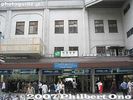
JR Akihabara Station
|
|

Vinyl tarps reserve picnic areas for flower-viewing parties at night.
|
|

Main thoroughfare, lined with cherry trees, cuts through the middle of the cemetery where cars whiz by. Quite irritating.
|
|

Kannon-do main worship hall 観音堂(本堂)Gokokuji Temple has held large funerals for some famous people like singer Yutaka Ozaki in 1992.
|
|

Bracing a pine tree for winter snow.
|
|

Always a crowd in front of JR Akihabara Station
|
|

Setting up the wooden target.
|
|

Ontake Jinja 御嶽神社
|
|

One end of Shakujii Park.
|
|

Canal Cafe is right below the cherries. But notice empty tables despite the long line.
|
|

Iwasaki Yataro, the founder of the Mitsubishi Zaibatsu, acquired the estate in 1878 and developed the garden with a pond and famous stones brought from all over Japan.
|
|

Entrance to one walking path with a poem monument.
|
|

Main road in front of JR Sugamo Station
|
|

JR Gotanda Station, east entrance 五反田駅
|
|

The Nitenmon Gate was completed in 1896 and features wooden statues of Zocho and Komoku, two of the four Devas which guard the four cardinal directions from demons.
|
|

He returns home to Shibamata every once in a while, usually at a most inopportune time for the family, and eventually leaves in disgrace after a family argument or lost love. Photo: Map of Japan marking all the prefectures where Tora-san was filmed.
|
|

View from Dai-Hondo Hall
|
|
|
|

Cherry blossom tunnel at Aoyama Cemetery.
|
|

Kannon-do main worship hall 観音堂(本堂)
|
|
|

Here's one reason for the crowd...
|
|

Bull's eye. This is the third and last target along the course. It is quite difficult to hit all three targets, especially the last one.
|
|

Ontake Jinja, main hall on right.
|
|

Shakujii Pond 石神井池
|
|

Empty rowboats too.
|
|

Many matsu pine trees and many stones.
|
|
|

Cherry blossoms near JR Sugamo Station
|
|

JR Gotanda Station as seen from Keihin Kyuko Gotanda Station.
|
|

Founded in 1629 by a priest named Nitchu and his disciple Nichiei, the temple belongs to the Nichiren sect of Buddhism.
|
|

It is difficult to pinpoint exactly why the series is so popular and enduring. It's probably a combination of several elements. Photo: Summary of all movie installments
|
|

Winter-flowering cherry blossoms
|
|

Hanami
|
|
|

Aoyama Cemetery is one of Tokyo's noted spots for cherry blossoms. However, having hanami picnics is not allowed.
|
|

Cherry blossoms are so fleeting. They last for only a short time, like life itself. And so cherry blossoms are often found at cemetaries in Japan.
|
|
|
|

These trees stood out.
|
|
|
|

Cherry blossoms and graves.
|
|
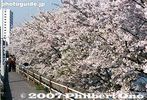
Cherry trees along the Sotobori Moat. Formerly a moat of Edo Castle, this canal stretching from Iidabashi Station to Ichigaya Station along the Chuo Line.
|
|

Daibutsu Buddha statue
|
|
|

And another one. Young pretty/cute girls in costume pass out flyers, but end up being street models for amateur photographers who have no girlfriends to shoot.
|
|

The horseback archer raises his bow and arrow high in the air as he nears the target.
|
|

Behind Ontake Shrine's main hall is a wall of sculpture.
|
|

Swan boats on Shakujii Pond. 石神井公園
|
|
|
|

Stepping stones, called Isowatari, are another major feature of the garden.
|
|
|

JR Gotanda Station, east side
|
|

Aoyama Cemetery map. Quite complicated system to find grave plots.
|
|

The present Naiden (Inner Sanctuary) was completed in 1915. Keyaki (zelkova) was used for all the wood in the building. The present Haiden (Worship Hall) was completed in 1929. Photo: Taishaku-do Hall 帝釈堂
|
|

The hilarious humor of the characters, the heartwarming scenes, the shitamachi charm of Shibamata, the beautiful scenery and quaintness of the places Tora-san visits, the guest stars. Map of Japan marking all the prefectures where Tora-san was filmed.
|
|

Winter-flowering cherry blossoms and Dai-Hondo Hall
|
|

Flower-viewing parties can in the daytime or nighttime
|
|

Daibutsu Buddha statue
|
|

Yukimi Stone Lantern
|
|

They are happy to pose...
|
|
|
|

Closeup of rear wall sculpture.
|
|
|
|

Cherry tree shadow
|
|

Stepping stones, called Isowatari. 磯渡り
|
|

JR Gotanda Station, east side
|
|

Signs tell you where you are. Quite bewildering mapping system.
|
|

Taishakuten is the god Indra from Brahmanism, a Hindu religion. Being the god of rain and thunder, Indra was a powerful warrior god that was adopted by Buddhism as a protector. Photo: Glass wall protecting the exterior of Taishaku-do Hall.
|
|

Atsumi Kiyoshi who seems to have been born to play Tora-san. (Atsumi never seemed to age even after over 20 years in the role. Tora-san's carefree, happy-go-lucky lifestyle also appeals to many. Photo: Sculpture of Tora-san's famous hat and bag.
|
|
|

Great day for flower-viewing
|
|

Isowatari. 磯渡り
|
|

Tahoto Pagoda at Gokokuji temple in Bunkyo, Tokyo. Built in 1938 modeled after the original Tahoto Pagoda at Ishiyama-dera temple in Otsu, Shiga Prefecture. 多宝塔
|
|
|

The maid costume is all the rage in Japan, for several years now.
|
|
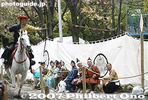
Arrow in mid-air. Asakusa Yabusame.
|
|

Wedded Pine Trees
|
|
|
|

River wall
|
|

JR Gotanda Station, east side
|
|

Aoyama Cemetery has over 123,000 graves occupying 125,000 square meters within the cemetery land area of 263,564 sq. meters.
|
|

It was believed that Indra would step in and chase away the demons causing calamities to the followers of Buddhism. Photo: Wood Carving Gallery (admission charged)
|
|

Sculpture of Tora-san's famous hat and bag
|
|

Winter-flowering cherry blossoms, Nishi-Arai Daishi, Tokyo 寒桜
|
|
|
|
|
|

Santa suit appears in Dec.
|
|

Dead on!
|
|

Another nearby shrine is Tenso Jinja, a 5-min. walk from Ontakesan Station. This is the schedule for their annual Negi-no-Mai Dance held on April 21.
|
|

Shakujii Pond 石神井池
|
|

Rowboats and low-hanging cherries.
|
|

Shakujii River sprinkled with fallen petals.
|
|

Isowatari. 磯渡り
|
|

JR Gotanda Station, east side
|
|

This is the Foreigner's Cemetery where many foreigners who helped to modernize Japan are buried.
|
|

The side and rear exterior walls of the Taishakudo are blanketed with panels of detailed woodcarvings. They are the most outstanding feature of Shibamata Taishakuten Temple.. 彫刻ギャラリー
|
|

Notice the figure on the upper right...
|
|
|
|
|
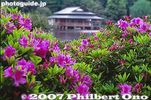
Azalea bushes and Ryotei teahouse
|
|
|

Dry waterfall
|
|

Coming out of Akihabara Station
|
|

The archers return to the starting point.
|
|

Tenso Shrine 天祖神社
|
|
|
|

The end of the moat is also a good viewpoint.
|
|

Pleasant walking path.
|
|

A monument erected in March 2007 by Tokyo Governor Ishihara Shintaro in appreciation of the foreigners who helped build Japan.
|
|

Route 1 in Higashi-Gotanda
|
|

There are ten large carvings (each 2.27 meters by 1.27 meters) depicting scenes from the Lotus Sutra (Hokekyo).
|
|

Entrance to Tora-san Museum where Tora-san is helping to install the museum sign.
|
|

Winter-flowering cherry blossoms 寒桜
|
|

Children's playground
|
|
|
|

Stone monuments
|
|
|
|
|

Tenso Shrine 天祖神社
|
|
|

The end of the moat is also a good viewpoint.
|
|
|

JR Gotanda Station, east side
|
|

List of foreigners buried in this Foreigner's Cemetery. Note that there also other foreigners buried in other parts of Aoyama Cemetery.
|
|

The woodcarvings were requested by the temple's 16th priest, Nissai. Through a generous donation from devoted follower Suzuki Genjiro, the project was begun.
|
|

Tora-san is helping to install the museum sign.
|
|
|

Little Mermaid
|
|
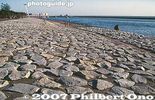
Kasai Rinkai Park waterfront
|
|

Pine branches and azaleas
|
|
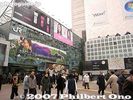
Shibuya Station, Hachiko Exit 渋谷駅 ハチ公口
|
|
|

Main drag of Akihabara
|
|
|

Tenso Shrine altar
|
|

Entrance to Koishikawa Korakuen Garden. It opened as a public garden in 1938. The garden is modeled after Chinese concepts and features.Near Iiidabashi Station and Korakuen Station.
|
|
|
|

How it looks from the end of the moat.
|
|
|

JR Gotanda Station and Tokyu, road to Sony HQ
|
|
| 3241 files on 13 page(s) |
1 |
 |
 |
 |
 |
|